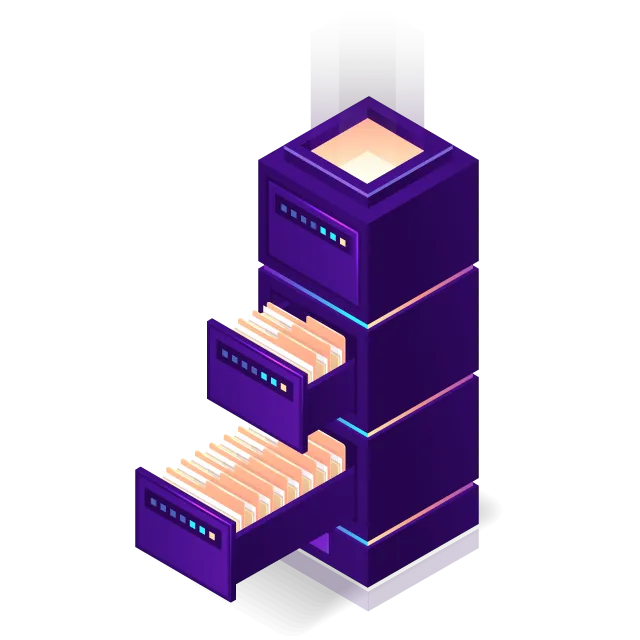System Hardening Service
73% of companies have at least one critical security misconfiguration (Threat stack)
At Invesics, we simplify the process of securing your systems by reducing the number of potential entry points an attacker could use to gain access. With our expert system hardening services, you can rest assured knowing that your systems are fortified from the start.



System Hardening Type One
Server Hardening
Server hardening is a process of general system hardening which involves the secure use of advanced safety measures in the hardware, firmware, and software layers of data, ports, components, function, and permissions of a server.
- Maintaining the operating system of a server patching and updating
- Regularly updating the software of a third party that is essential to server operations and removing software from a third party that does not respect the established safety cyber standards
- USB ports disabled at boot
System Hardening Type Two
Software Application Hardening
The process of updating or installing additional security measures to safeguard both standard and third-party apps installed on your server is known as software application hardening, or simply application hardening.
- Making use of firewalls
- Using anti-virus, anti-malware, and anti-spyware software
- Data- Encryption via software eg. SHA-256




System Hardening Type Three
Operating system hardening
Patching and installing sophisticated security measures to secure a server's operating system is known as operating system hardening (OS). Automatically installing updates, patches, and service packs are one of the greatest ways to establish a hardened state for the operating system.
- Discarding non-essential drivers
- Encrypting the hard disc drive (HDD) or solid-state drive (SSD) that stores and hosts your operating system
- Authenticating and limiting system access permissions
System Hardening Type Four
Database Hardening
Database hardening is protecting both the contents of a digital database and the database management system (DBMS), which is the database application that users use to store and analyze data in a database.
Database hardening is primarily comprised of three steps:
- Managing and restricting user privileges and access
- Disabling database services and functions that are no longer needed
- Encrypting and securing database data and resources
The following are examples of database hardening techniques:-
- Administrators and administrative privileges and functions are restricted
- Encrypting database data in transit and at rest
- Adherence to RBAC (role-based access control) policies




System Hardening Type Five
Network hardening
Network hardening is the process of securing the basic communication infrastructure of multiple servers and computer systems that are connected to a network.
Network hardening is accomplished primarily through the installation of an intrusion prevention system (IPS) or intrusion detection system (IDS), both of which are typically software-based. These applications automatically monitor and report suspicious network activity, assisting administrators in preventing unauthorised network access.
Network hardening techniques include:-
- Properly configuring and securing network firewalls
- Auditing network rules and network access privileges, disabling specific network protocols and unused or unnecessary network ports, encrypting network traffic, and disabling network services and devices that are not presently or never used.
We Believe In Transparent Pricing
Enhance the security and resilience of your systems with Invesics' top-notch system hardening services.
Why we need to harden?
Simply reduce the number of potential entry points an attacker could use to gain access to your system from the start.
It usually involves securing a computer system's software, but also its firmware and other system elements, in order to reduce vulnerabilities and the risk of the entire system being compromised.
Expert cyber-security solutions, at Tailor-made costing
That fit every requirement
Why Us?
Why Invesics for system hardening service
Our value proposition is our custom-made services. Yes, we agree that one size fits all, but we believe that each organization has its own set of requirements that do not suit the one-size-fits-all model. As a result, we tailor our services to each client's needs and place an emphasis on manual validation of any false positives. A keen mind can uncover what machines can't. Another feather in our cap is end-to-end services. Following the completion of a project, we give support with all security requirements.
Standards we follow:
System hardening best practices outlined by the:
- NIST in Special Publication (SP) 800-123
- CIS Benchmarks are the global standards followed for system hardening.




Our Deliverables
What we will offer along system hardening service
- Password Protected rich Reporting for all Scope
- Vulnerability Listings/ with severity to fix
- Vulnerability Listings - based on who need to fix that (Developer, Server Admin, Network Admin)
- Evidence (Images or video) for each vulnerability
- Conceptual fixings guidance for each vulnerability
- Explanation Call with Dev/Fixing Team if required
- Complementary Re-Test within one month of Initial Report Submission
Relevant services
Supportive Cyber Security Services
Mobile Application Pen-Testing
Network Pen-Testing
Cloud Pen-Testing
Server Hardening
Under Attack? Need Immediate Assistance?
Reach out to our expert teammates to get solution for your Cyber Security concerns. We help to protect your organization from Data-breaches.